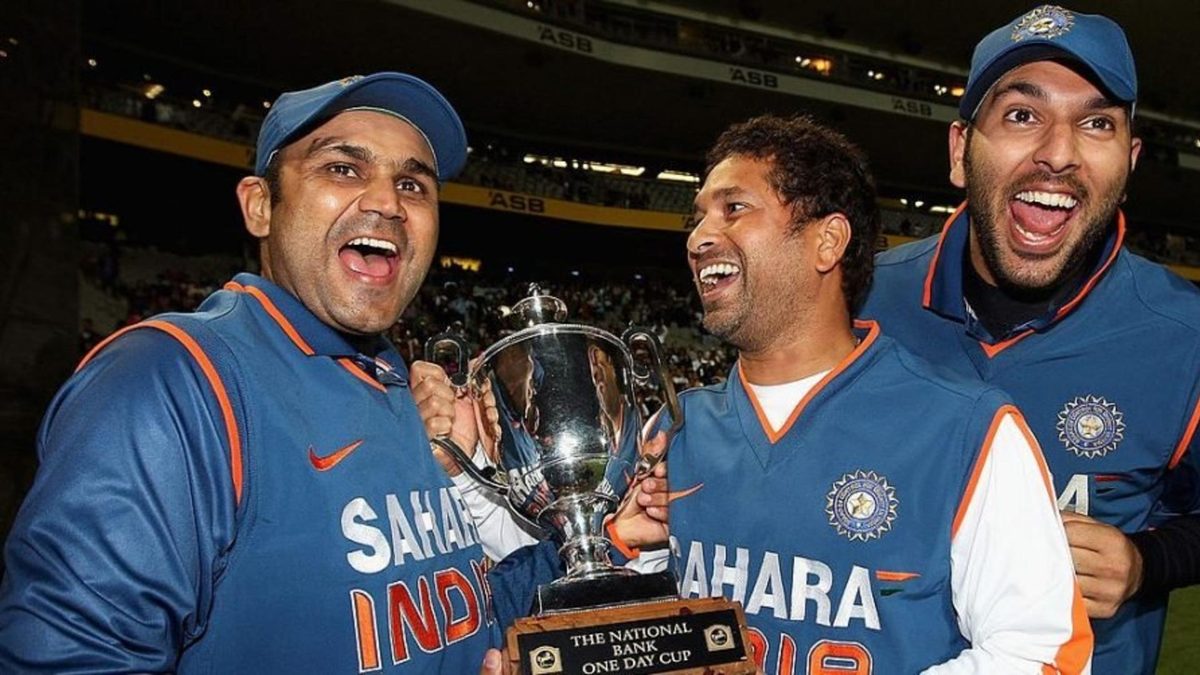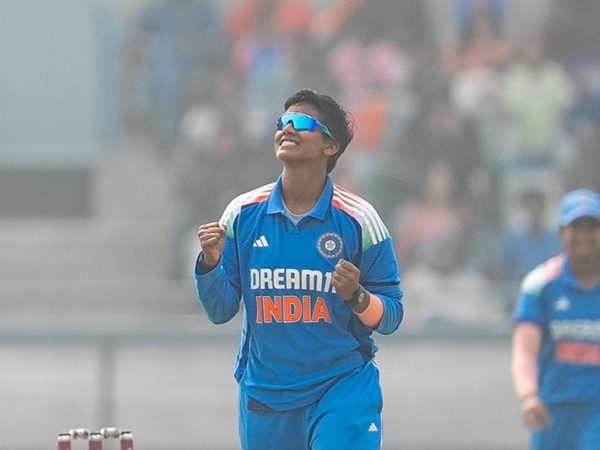
Looking back at India’s regular part-time bowling options in one-day cricket in the 2000s, and ranking them based on their bowling impact through the decade.
Subscribe to the Wisden Cricket YouTube channel for post-match awards, player interviews, analysis and much more.
Part-time bowlers were an integral part of India’s bowling attack in the first decade of this millennium and were often called on to turn over their golden arms and prise out wickets. As India tried to pack their line-up with more batsmen, they would often afford to keep a bowler out, knowing that the batsmen had enough bowling abilities to chip in with important overs.
In all, seven part-time bowlers sent down at least 50 overs in the period. We have mentioned the statistics of their ODI bowling from January 1, 2000 to December 31, 2009.
#7 Dinesh Mongia
14 wickets @ 40.78
Approaching the crease with this ungainly bowling action, Mongia’s left-arm spin hardly ever looked threatening, and there was almost never any turn, but he still ended up being a regular on the part-timers list. Relying more on angles and trapping batsmen with his straighter ones, his victims tally consisted of AB de Villiers, Shane Watson and Andy Flower, among others.
Best bowling: 6-0-31-3 v Zimbabwe, 2002
Tried as the sixth bowler, Mongia’s left-arm spin cut through Zimbabwe’s middle order with a three-wicket haul. Incidentally, the match was at his home ground in Chandigarh.
#6 Suresh Raina
6 wickets @45.83
Raina entered one-day cricket in the second half of the 2000s, but bowled only five times until the start of 2009, only after which his off-spin started getting more attention. Raina hardly ever made the ball turn and relied more on clamping down on the run-rate while sending down some quick overs. In this period, he never bowled his full quota in a game, instead, punctuating others’ spells with handy overs from one end. By the next decade, Raina started being utilised further under MS Dhoni in both ODIs and T20Is.
Best bowling: 8-0-26-1 v Sri Lanka, 2009
One of the rare instances in the 2000s when Raina bowled an extended spell. With SL requiring 320 to win, Raina, along with the other part-timers kept the batting under check and returned with economical figures and a bonus wicket.
#5 Yusuf Pathan
17 wickets @ 37.64
With India looking to fill in a spot in the middle order ahead of the 2011 World Cup, Yusuf got an extended run towards the end of the decade. A tall off-spinner who used to extract extra bounce, Pathan would incessantly target the stumps, relying on change of pace to outfox batsmen, and had one of the better bowling averages among part-timers listed here.
Best bowling: 8-0-56-3 v West Indies, 2009
Called in to bowl ahead of Harbhajan Singh and Yuvraj Singh, Yusuf snared three out of the top seven batsmen in a high-scoring game. The spell was built on his usual modus operandi: straight, flat and skiddy bowling.
#4 Sourav Ganguly
56 wickets @ 39.66
On pitches that were conducive to his style (overcast skies, damp pitches), Ganguly was more than useful, making the ball jag off the seam, and sometimes move in the air. On drier surfaces, Ganguly would stick to a stump-to-stump channel and rely on slight movement. His fiery personality and natural aggression helped elevate his gentle medium pace even further.
Best bowling: 10-0-34-5 v Zimbabwe, 2000
It was Ganguly’s game from start to finish. He tore through Zimbabwe’s middle order with his military medium, and then followed it with an unbeaten 71. It was one of his two ODI five-wicket hauls.
#3 Sachin Tendulkar
70 wickets @ 40.65
One of the most prolific part-timers of all time, Tendulkar could bowl it all – leg-spin, off-spin, seam-up. The 1990s saw him bowl comprehensively, but by the turn of the millennium, injuries had curtailed his bowling contributions, and post 2007, he hardly bowled in the format. However, he was still effective with his bag of tricks and was also often called on to break partnerships.
Best bowling: 10-0-50-5 v Pakistan, 2005
In Kochi, the same city where he had taken his first five-wicket haul seven years earlier, Tendulkar returned to claim another five-for, using his loopy leggies to clean up Pakistan’s middle and lower order.
#2 Virender Sehwag
86 wickets @ 39.87
A crafty off-spinner who could garner surprise turn on dry surfaces, Sehwag was one of the constants of India’s part-time bowling contingent of the 2000s. Bowling with a fluid action and sticking to his basics, Sehwag was India’s designated partnership breaker, almost forcing batsmen to target him and lose their wicket. He took seven three-wicket hauls in the period.
Best bowling: 5-0-25-3 v Sri Lanka, 2002
While he did bowl multiple spells of the same kind, a young Sehwag played a key part in the 2002 Champions Trophy semi-final, which saw South Africa’s batting collapse dramatically in a chase, claiming three vital wickets at crucial intervals.
#1 Yuvraj Singh
77 wickets @ 40.29
A key component of India’s bowling attack throughout the 2000s, Yuvraj’s left-arm spin kept improving as his career progressed. The groundwork for his all-round masterclass in the 2011 World Cup was laid in the previous decade, when he bowled extensively, almost always around other spinners. Using angles smartly, he used to trap batsmen in flight, using his slow, loopy deliveries to prise out wickets, and ended his career being considered as a proper all-rounder.
Best bowling: 4.3-2-6-4 v Namibia, 2003
Against minnows Namibia in the 2003 World Cup, Yuvraj Singh had a ball, picking up figures of 4-6 in four overs. The opposition might not have given an accurate depiction of his skill – he took another four-wicket haul five years later, claiming four of the top five English batsmen in Indore.








